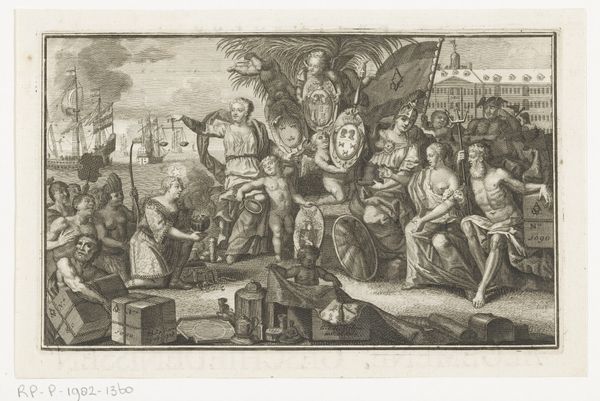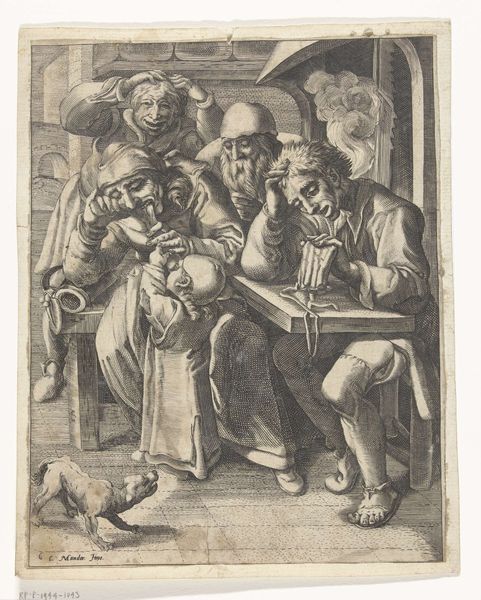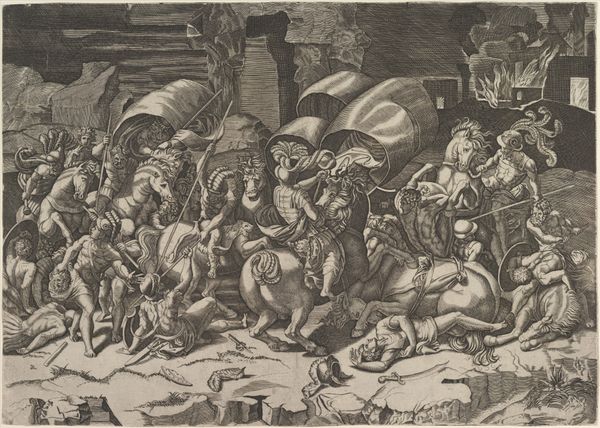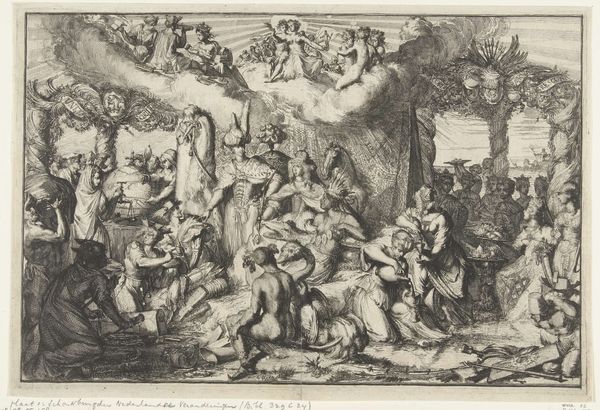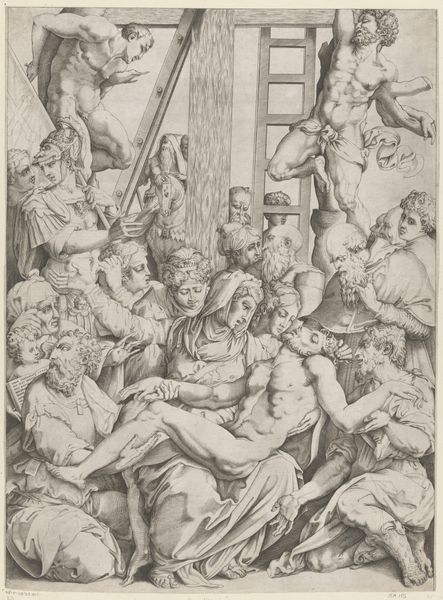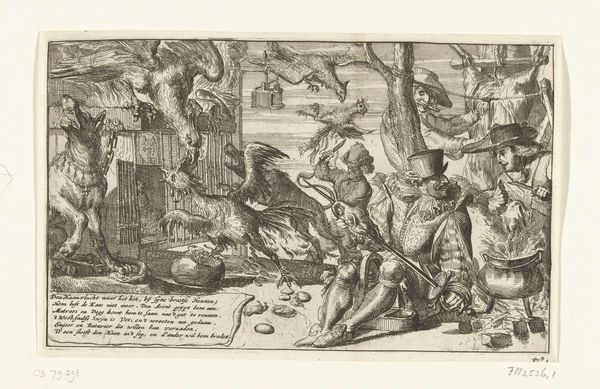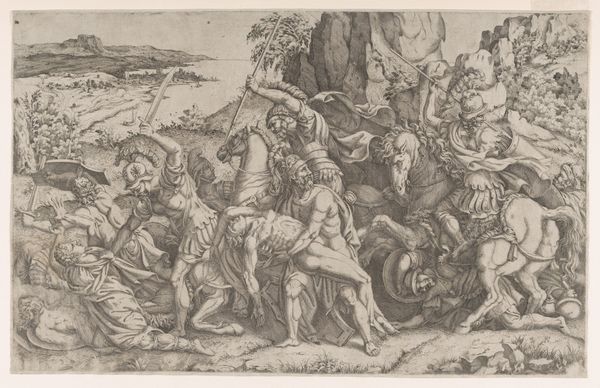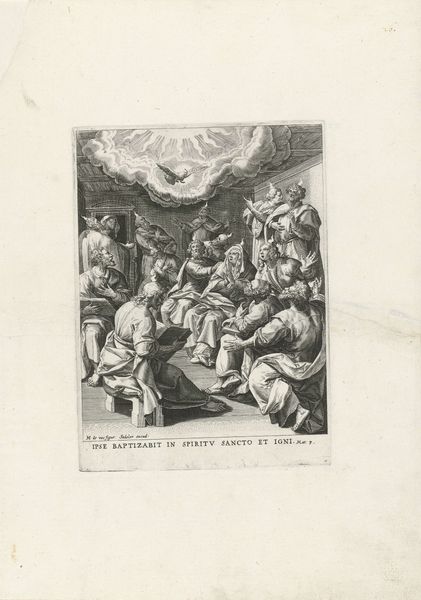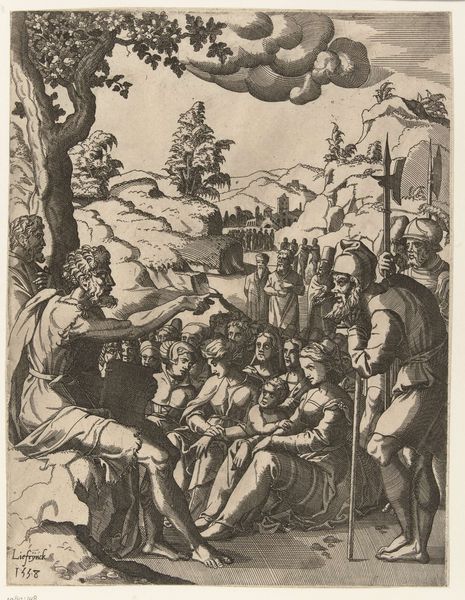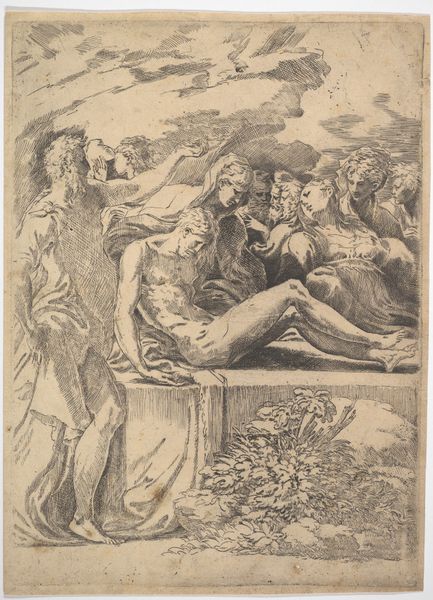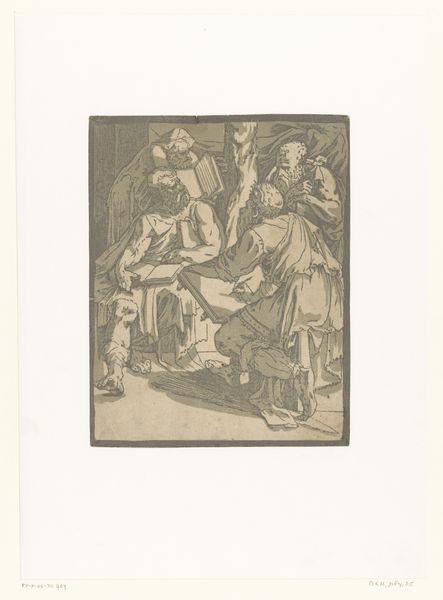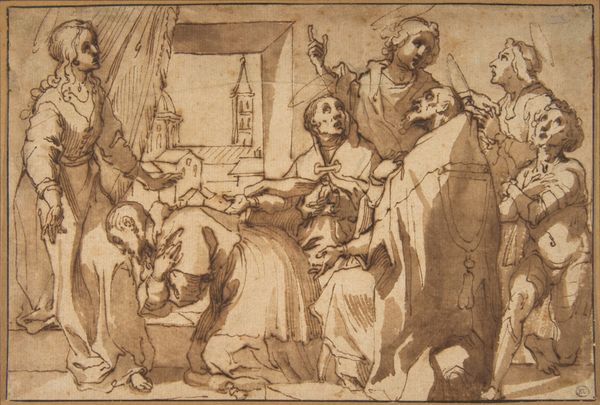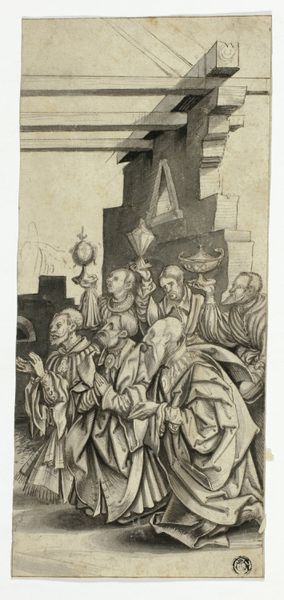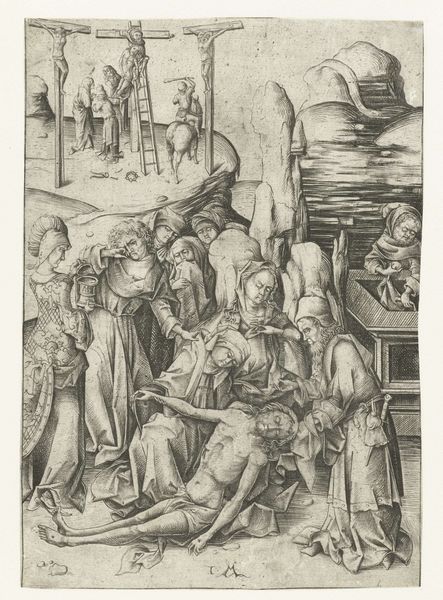
drawing, print, engraving
#
portrait
#
drawing
# print
#
pencil sketch
#
history-painting
#
academic-art
#
engraving
Dimensions: Sheet: 2 5/8 x 2 15/16 in. (6.7 x 7.5 cm)
Copyright: Public Domain
Editor: Here we have "The Bench," an engraving dating from 1790 to 1810, attributed to Dent. It depicts what appears to be a group of bewigged figures. The etching style almost gives it a humorous feel, yet the subject matter feels very official and stoic. What strikes you about this piece? Curator: Well, it’s tempting to dive straight into the figures themselves, but let’s consider the production. This print, etched by hand, was designed for mass dissemination. The artist’s labor is crucial. It challenges any notion of unique artistic genius by being reproducible and widely available. This engraving brings to light the function and mechanics of power, reproduced over and over. Who would be consuming such an image? Editor: So you are less focused on what's being represented, and more on the process? It looks like satire aimed at the elite. Curator: Precisely. This isn't just any gathering; it’s likely a commentary on the judicial system. Now, the wigs themselves—massive, absurd!—they're crafted from hair, an organic material subjected to immense styling. It reveals the social context around materiality, think about the labor and resources it took to procure, process, and maintain these wigs. This piece isn't just a portrait; it is a reflection on the material culture supporting authority. And notice the spectators observing from the top: What could they represent in their act of gazing down at these officials? Editor: So the method of production allows for critique? I never would have considered the material cost of the wigs adding another layer to the critique of wealth and authority. Curator: Exactly. It provokes questions. How are material objects manipulated to create power dynamics and communicate certain ideas? Thinking this way makes the image not just an artifact, but a record of material culture and social hierarchy. Editor: I’m definitely looking at this artwork differently now, understanding the means by which it was produced as part of the statement is enlightening.
Comments
No comments
Be the first to comment and join the conversation on the ultimate creative platform.
